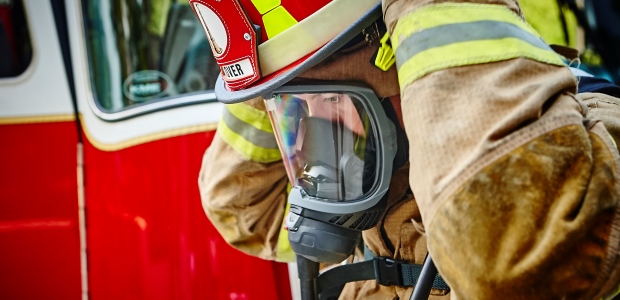
Why Respiratory Protection and Fit Testing Matter
I cannot stress enough how important it is for all first responders to always wear respiratory protection on the fireground—even after the fire is out.
- By Dawn Bolstad-Johnson
- May 01, 2019
The initial report comes in, an alarm goes off. A construction company has hit an electrical line, resulting in a small explosion and fire in a garden office complex nearby. The engineering system has reportedly extinguished the fire.
Firefighters jump to action. As they make entry to the office building, their SCBAs are on their backs, but their regulators are not attached. The fire is out. They continue into the electrical room. They find evidence of an arced panel and the source of the fire. They look for any hidden hot embers, but nothing is found. That same night, the firefighters begin to have trouble breathing.
Where was the hazard? There were likely airborne particulates in the soot that were contaminated with chloride and cyanide salts. When the particulates made it into the lung, the lung recognized the foreign body and went to work to digest it. In the digestive process, ions were released and caused irritation of the lung at the cellular level. If the firefighters had worn their respiratory protection, this would have never happened.
I cannot stress enough how important it is for all first responders to always wear respiratory protection on the fireground—even after the fire is out. But just as important is for firefighters and other first responders to always complete their annual fit test and user seal check.
Fit Testing is Essential for First Responders
I have personally witnessed firefighters discount the need for fit testing because their masks are under positive pressure. The fact is that if there is even a small leak in the facepiece, because the mask is under positive pressure, the bottle will make up the difference. In simpler terms, if there is not a good fit, the firefighter will run out of air sooner than expected because the mask is going to require more air to "fix the leak." To fix the leak, the air bottle must dump more air into the facepiece to maintain the positive pressure, which will result in less air for the firefighter.
Running out of air in an active fire could be a death sentence for our local heroes. Annual fit testing matters and is essential for all first responders.
There are different fit testers on the market. The best technology that I have found is CNP technology. This method uses controlled negative pressure to quantify the size of the leak (if any) in the mask. Using air pressure as the challenge agent in fit testing gives the most accurate results, and there are published scientific studies to prove it.
Other quantitative methods may provide the user with a false positive or a PASS on the fit test. The last thing a first responder needs is a false pass on their respiratory protection fit. In my experience, the Quantifit is by far the best and the most accurate. There is minimal chance for a false PASS result on the Quantifit because the air pressure inside the mask is what is being quantified. If there is a leak, it will be detected. Leaks matter; even small ones! The Quantifit does not lie. Many fire departments have been using this technology for years.
This article originally appeared in the May 2019 issue of Occupational Health & Safety.
About the Author
Dawn Bolstad-Johnson, MPH, CIH, CSP, FAIHA, is a Fit Test Specialist Consultant with OHD, LLLP (www.ohdusa.com) in Hoover, Ala.